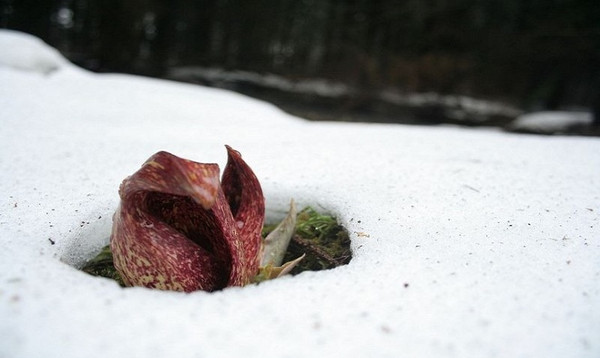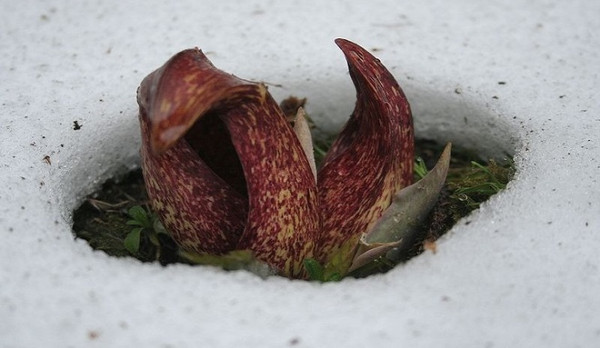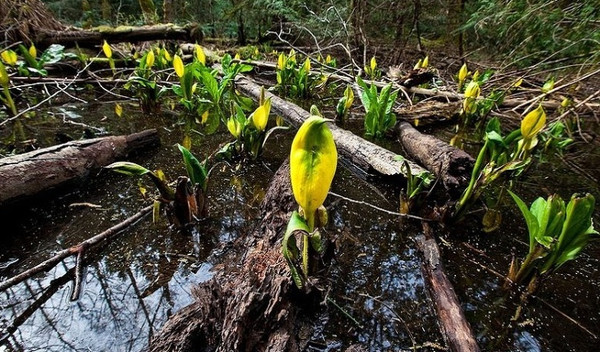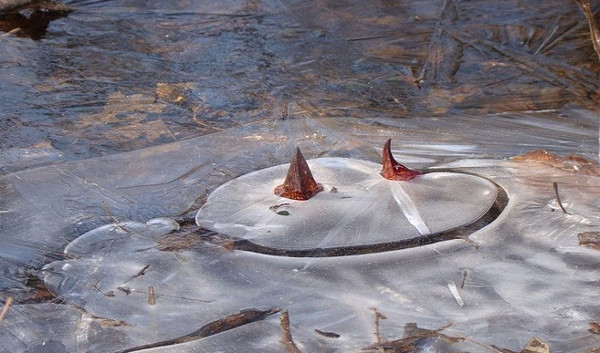Heat plants melt ice
Around the place where skunks grow up, there is usually a small pool of water, made of ice and snow melted by the heat of the trunk.
Skunks of heat-fed cabbage skunks melt snow ice

From the end of February to May, in the forests or wetlands in eastern Canada and northeastern United States, a low-odor plant with the smell of skunk cabbage (Symplocarpus foetidus) often grows.This is one of the first plants to spring in North America when the snow hasn't melted.(Photo: Flickr).

When the tree reaches out of the snow and begins to flower, it creates a small puddle surrounding the melted snow.The amount of heat needed to melt snow does not come from the sun but is generated by the tree itself.Skunks are one of the few plants that produce heat.(Photo: Flickr).

According to Amusing Planet, heat-generating plants are present in many different families, but the Ruyus family includes many more species.Cabbage skunks, rotten horse flowers, sweet potatoes and betel nut trees are just some of the heat-generating plants of the Ro family.These plants can emit larger amounts of heat than mammals.(Photo: Flickr).

In an experiment, skunk cabbage has a flower temperature of 24 ° C, higher than the air temperature of 9 ° C.When the outdoor temperature drops to -15 ° C, the flower temperature remains the same.(Photo: Flickr).

Heat-producing plants have been known for more than 200 years, but recently, researchers have begun to discover its biochemical mechanism.Heat is produced in mitochondria, which convert organic matter into usable energy.(Photo: Flickr).

According to biologists, heat generating plants produce heat to support pollination.The heat makes the fragrance more flexible, helps the scent spread and pollinating insects can find the location of the tree from afar.Also, thanks to the heat, heat-producing plants also become more attractive to insects that like warmth.(Photo: Flickr).

However, the flowers for pollinating insects then leave and have the opportunity to spread pollen better than insects that trap insects.That's why heat generation is not common in the plant world.During evolution, heat-producing plants disappear gradually, giving way to plants with better pollination methods.(Photo: Flickr).
- Perhaps you will have to be jealous when you know that plants have a certain kind of genes to fight heat
- Making chocolate does not melt at 40 degrees Celsius
- The sun mirror can melt steel
- Danger when temperatures rise
- Super volcano melted asphalt
- VN: Synthesis of heat to heat
- Oral heat - causes, symptoms and cures
- The shocking truth about human heat tolerance
- Effective solution against heat on the terrace
- Automatic heat sensing system for nursing seedlings
- The project turns trees into multi-purpose biological sensors
- 10,000-year cooking technique changes ancient civilization
 Why do potatoes have eyes?
Why do potatoes have eyes? 'Tragedy' the world's largest carnivorous life: Death becomes ... public toilet
'Tragedy' the world's largest carnivorous life: Death becomes ... public toilet Tomatoes were once considered 'poisonous' for 200 years
Tomatoes were once considered 'poisonous' for 200 years Detecting microscopic parasites on human face
Detecting microscopic parasites on human face